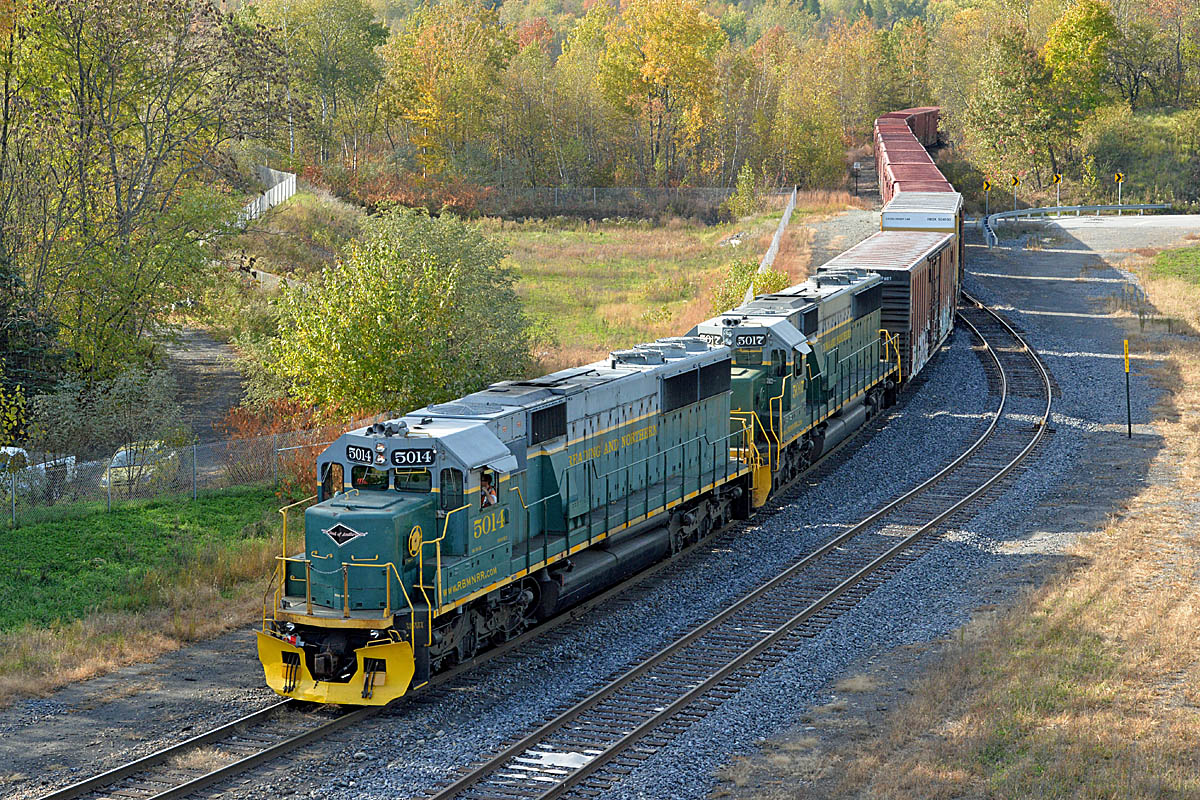Now RBM&N, which also owns the Lehigh Gorge Scenic Railway tourist train operation, has equipped its first locomotives with event recorders: a pair of EMD SD50s. Equipping the two locomotives cost $12,000 each, according to Andy Muller, the railroad’s CEO. Muller says the railroad is still deciding which of the other 40 locomotives it owns will be equipped with event recorders. The recorders will be installed as shop crew time permits.
According to the federal regulations, event recorders must record train speed, selected direction of motion, time, distance, throttle position, and the applications and operations of the automatic and independent brakes. If a locomotive is equipped with cab signals, the recorders must also record the application and operation of the dynamic brakes and cab signal aspects. The recorders must document the last 48 hours of a locomotive’s operation.
Another tourist railroad that uses event recorders is the Adirondack Scenic Railway in upstate New York. According to Bill Branson, president of the board of the Adirondack Railway Preservation Society that operates the line, it has event recorders on all of its locomotives except for two switchers in yard service. Branson says the railroad purchased its first event recorder-equipped locomotives in Canada. It also has alerters that were added to several units a few years ago. The alerter sounds a warning after a period of inactivity by the engineer. If the engineer fails to respond to the alerter warning tone within 15 seconds, the system applies the brakes and stops the train.
Shop crews download data from the recorders using a laptop computer each time a locomotive comes in for federally mandated 92-day inspections, Houghton says.
The railroad uses that data to study train operations, checking for issues such as engineers exceeding maximum continuous traction motor current ratings on older DC units. “We can catch an engineer not being nice to the locomotive and nip those things in the bud,” he says. The recorders have also helped the railroad conserve fuel. If an incident does happen, the railroad can download the recorders to determine if operational factors contributed.
Houghton says the recorders have been quite reliable, with many of them being in service for 17 to 18 years. Track speeds on the Vermont Railway vary from 10 and 15 mph for freight and passenger trains up to 40 mph for freight and 59 mph for passenger trains, making the recorders a necessity.
















“Equipping two cost $12,000 each[.]”
While it wouldn’t meet either the reliability, survivability, or length of recording requirements specified by the FRA,
a video recording made by two or three $500 cell phones equipped with GPS and gyro capability would capture all of the requisite parameters (and considerably more). The high cost cited by RBM&N (and the high cost of installing PTC cited by many railroads) reflects an unfortunate trend both within the industry and its regulators to adopt to changes in electronic techonolgy.
Modern electronic devices, particularly IC’s, has huge development costs and comparatively low production costs. Hence, high volume is critical to low per-unit costs. High volume in this case means on the scale of consumer electronics. The entire, world-wide, railroad industry cannot come close to those volumes, so it makes sense to borrow pieces from the consumer electronics realm whenever possible. That often requires some creative thinking as to how to manage the requirements so that the required result is achieved while using mass-produced, not completely reliable, and not railroad-specific equipment.
One example: length of recording and survivability requirements. Making event recorders survivable is expensive. However, having event recorders download their data via either the already-extant radio or by periodically checking for a cellular connection and utilizing that (a feature already present in services such as GreatCall) is much expensive, because it has much wider use. Similarly, such periodic automatic reporting would greatly reduce the need for on-unit storage, as records could be kept in a central database. Currently, such an approach does not meet FRA regulations, which I believe is a problem with the regulation rather than the technology.